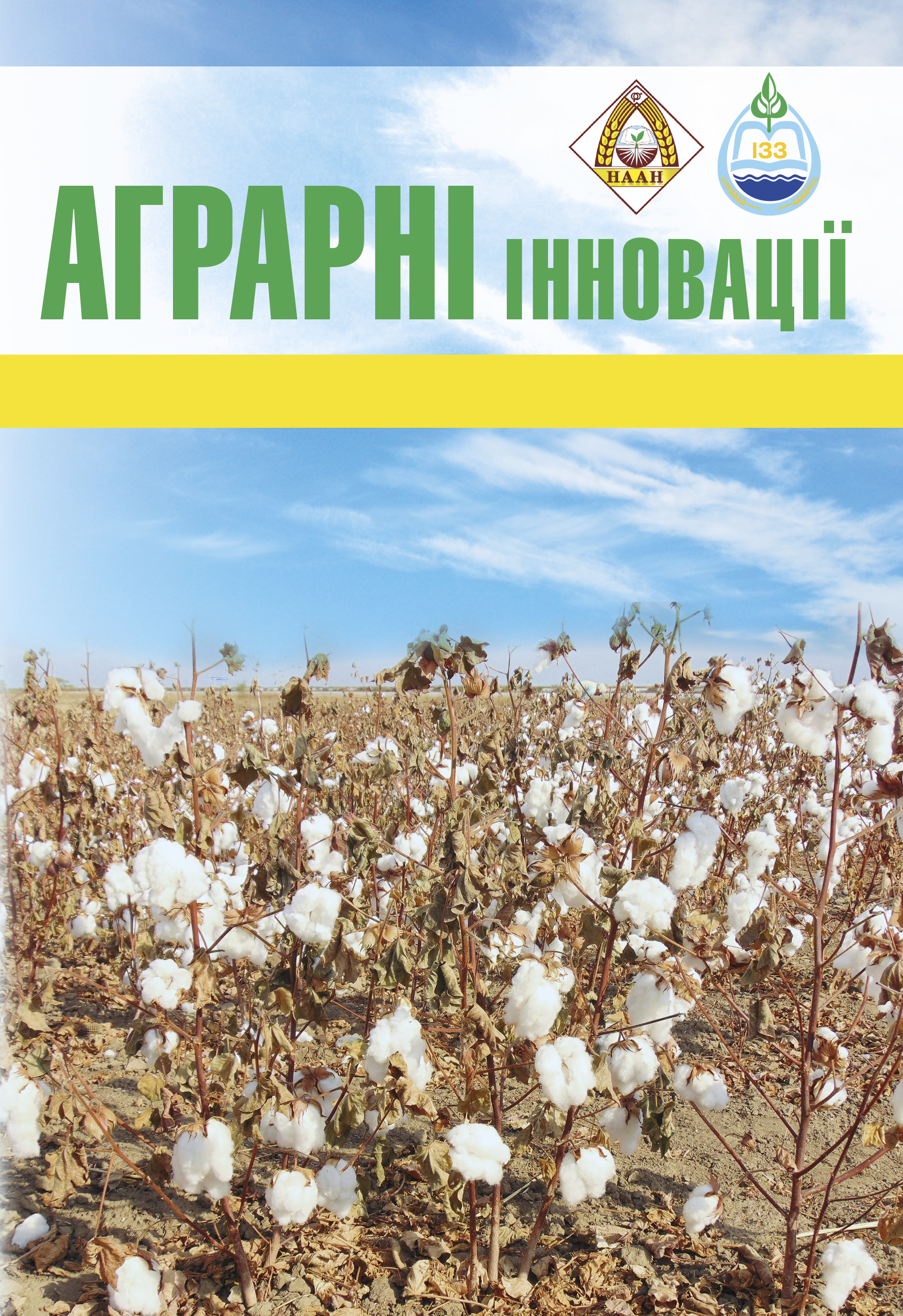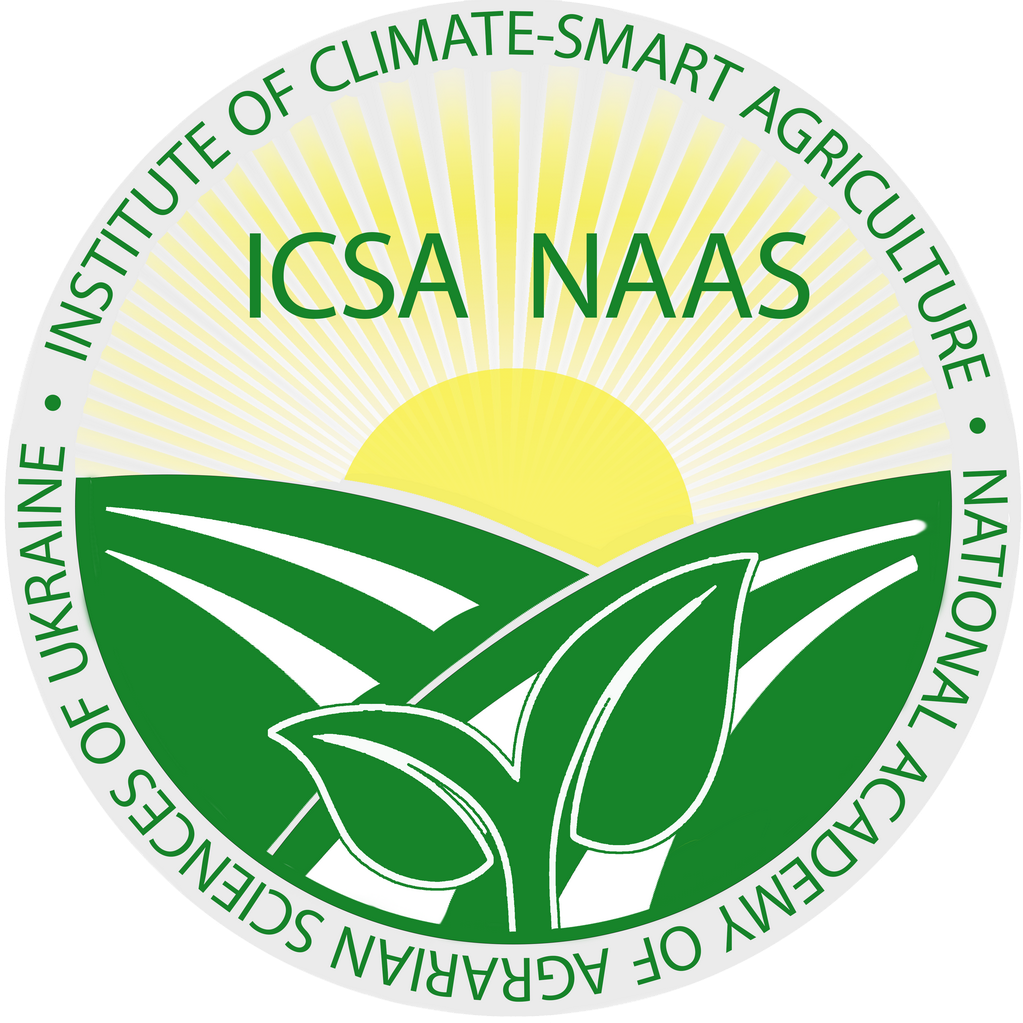Features of determining the technological indicators of grain in hybrids of popcorn (Zea mays L. everta Sturt.)
Abstract
Purpose. The purpose of the research was to study the influence of the duration of the period from harvesting to popping on the technological indicators of popcorn grain.Methods. The experiment was conducted in the labora- tory of breeding corn of mid-ripening and mid-late hybrids of SE Institute of Grain Crops of the National Academy of Agrarian Sciences of Ukraine. The material for the research was 14 experimental trilinear popcorn hybrids of our own selection. Technological indicators of grain were studied according to the method developed at the SE Institute of Grain Crops of the NAAS in 2023. The Clatronic PM 3635 was used for popping at 5, 25, 45, 60, 75 and 90 days after harvest. The popping expansion, percentage of unpopped kernels and number of popcorn flakes were determined separately for each hybrid for each type of popping.Results. Popping expansion (PE) varied from 25.5 cm3/g to 47.5 cm3/g, and the mean values o f the trait varied from 34.0 cm3/g on day 5 after harvest to 39.6 cm3/g on day 60. In 50% of the hybrids, the highest PE was observed on the 60th day after harvesting. In general, 93% of popcorn hybrids showed an increase in PE from day 5 to day 60, and after day 60 it remained unchanged in 29% of hybrids, increased in 42% of hybrids, and decreased in 29% of hybrids. The percentage of unpopped kernels in popcorn hybrids varied from 0% to 10.6%, and the average values of this indicator varied from 2.51% to 3.14%. In 60% of the hybrids, the percentage of unpopped kernels did not exceed 5% throughout the study period, which corresponds to the assessment of “excellent”. The length of the period from harvest to popping also affected the type of popcorn.On day 5, none of the hybrids had a “predominant type of popcorn,” i.e., a type that had ≥ 75% in 2 replicates. At 90 days after harvest, 6 hybrids had “predominant type of popcorn.” Analyzing the composition of popcorn at 5, 60, and 90 days after harvest, it was found that the average percent- age of “bilateral popcorn flakes” was 20%, 63%, and 69%; “multilateral popcorn flakes” – 30%, 14%, 11%; “unilateral popcorn flakes” – 27%, 18%, 18%, and “mushroom-shaped popcorn” – 24%, 5%, 3%, respectively. The time of popping had a strong positive relationship with the popping expan- sion and the bilateral popcorn flakes and a strong negative relationship with the multilateral popcorn flakes, unilateral popcorn flakes and mushroom-shaped popcorn types.Conclusions. It was established that the duration of the period from popcorn harvesting to popping affects the tech- nological indicators of grain. With increasing time, the pop- ping expansion increases and the percentage of unpopped kernels decreases. It has been proven that popping should be carried out no earlier than 60 days after harvesting. It was found that with the increase in the popping expansion, the percentage of bilateral popcorn flakes increases, while the percentage of other popcorn flakes decreases. It was shown that on the 90th day only 48% of hybrids formed the predominant type of popcorn. It was established that, according to the results of the study of technological indi- cators, the following hybrids are suitable for commercial use 90 days after harvesting: (Cyclone × RS 19) – popping expansion – 47.0 cm3/g; popping – 100%; type of popcorn – "bilateral popcorn flakes" and (Cyclone × RK 25) – popping expansion – 47.5 cm3/g; popping – 100%; type of popcorn – "bilateral popcorn flakes".
References
2. Silva T. R. D. C., Amaral Júnior A. T. D., Gonçalves L. S. A., Candido L. S. et al. Agronomic performance of popcorn genotypes in Northern and Northwestern Rio de Janeiro State. Acta Scientiarum. Agronomy. 2013. Vol. 35. P. 57–63. DOI: 10.4025/actasciagron.v35i1.15694.
3. Srdić J., Milašinović-Šeremešić M., Radosavljević M., Kravić N. et al. Evaluation of agronomic and sensory characteristics of the popcorn kernel. Journal on Processing and Energy in Agriculture. 2017. Vol. 21, No. 4. P. 185–187.
4. Shandu S. F. Genetic diversity, correlations and path coefficient analysis in popcorn (Zea mays L. everta). Biology. 2013. URL: https://www.semanticscholar.org/ paper/Genetic-diversity%2C-correlations-and-path- analysis-Shandu/dc83e668d828e477902d2a1969ee5b d57acc68ff (Last accessed: 01.05.2025).
5. Cañizares L. D. C. C., da Silva Timm N., Ramos A. H., Neutzling H. P. et al. Effects of moisture content and expansion method on the technological and sensory properties of white popcorn. International Journal of Gastronomy and Food Science. 2020. Vol. 22. DOI: https://doi.org/10.1016/j.ijgfs.2020.100282.
6. Srdić J., Pajić Z., Filipović M., Sečanski M. The influence of moisture content of grain on popping volume of popcorn hybrids (Zea mays l. everta). Journal on Processing and Energy in Agriculture. 2015. Vol. 19, No. 1. P. 24–26. URL: https://scindeks.ceon.rs/article.aspx?artid=1821-44871501024S (Last accessed: 01.05.2025).
7. Gökmen S. Effects of moisture content and popping method on popping characteristics of popcorn. Journal of Food Engineering. 2004. Vol. 65, No. 3. P. 357–362. DOI: https://doi.org/10.1016/j.jfoodeng.2004.01.034.
8. Pajić Z., Srdić J., Todorović G. Effects of the popcorn grain moisture content on the popping volume. Časopis za procesnu tehniku i energetiku u poljoprivredi/ PTEP. 2006. Vol. 10, No. 3–4. P. 122–123. URL: http://rik.mrizp.rs/handle/123456789/148 (Last accessed: 01.05.2025).
9. Ahmet Ö. Z., Kapar H. Determination of grain yield, some yield and quality traits of promising hybrid popcorn genotypes. Turkish Journal of Field Crops. 2011. Vol. 16, No. 2. P. 233–238. URL: https://dergipark. org.tr/en/download/article-file/158731 (Last accessed: 01.05.2025).
10. Ranathunga R. A. A., Gunasekara G. T. N., Wijewardana D. C. M. S. I. Quality performance, proximate composition and sensory evaluation of developed fla-voured instant popcorn. Procedia food science. 2016. Vol. 6. P. 143–146. DOI: https://doi.org/10.1016/j.profoo.2016.02.034.
11. Sweley J. C., Rose D. J., Jia X., Williams R. A. et al. Effect of flake shape on packing characteristics of popped popcorn. Journal of Food Engineering. 2014. Vol. 127. P. 75–79. DOI: https://doi.org/10.1016/j.jfoodeng.2013.11.028.
12. Marques O. J., Filho P. S. V., Scapim C. A., Bonato C. M. et al. Sowing time of popcorn during the summer harvest under supplemental irrigation in Ferralic Nitisol and subtropical climate. Australian Journal of Crop Science. 2015. Vol. 9, No. 5. Р. 413–423. https://search.informit.org/doi/abs/10.3316/informit.221456993819438 (Last accessed: 01.05.2025).
13. Srinivasa Reddy V., Chandramohan Y., Rao N. V. and Krishna L. Character association and path analysis in popcorn (Zea mays var. everta). Crop Research. 2003. Vol. 25, No. 2. P. 297–300. https://www.cropresearch.org/volume-25-number-2-march-2003/(Last accessed: 01.05.2025).
14. Parsons L., Rodriguez O., Holding D. R. Improved taste and texture in novel popcorn varieties compared to conventional lines. Journal of Sensory Studies. 2021. Vol. 36, No. 5. https://doi.org/10.1111/joss.12687.
15. Paraginski R. T., Ziegler V., Peter M., Rockenbach B. A. et al. Physicochemical and sensory properties of popcorn grain stored at different temperatures. Current Agricultural Science and Technology. 2016. Vol. 22, No. 1. P. 14–23. URL: http://periodicos.ufpel.edu.br/ojs2/index.php/CAST (Last accessed: 01.05.2025).
16. Черчель В. Ю., Купріченков Д. С. Методика визна- чення технологічних показників зерна самозапилених ліній і гібридів кукурудзи розлусної. ДУ ІЗК НААН. Дніпро, 2023. 15 с.
17. Літун П. П., Кириченко В. В., Петренкова В. П., Коломацька В. П. Системний аналіз в селекції польових культур: навч. посіб. Інститут рослинництва ім. В. Я. Юрʼєва. Харків, 2009. 354 с.

This work is licensed under a Creative Commons Attribution 4.0 International License.






